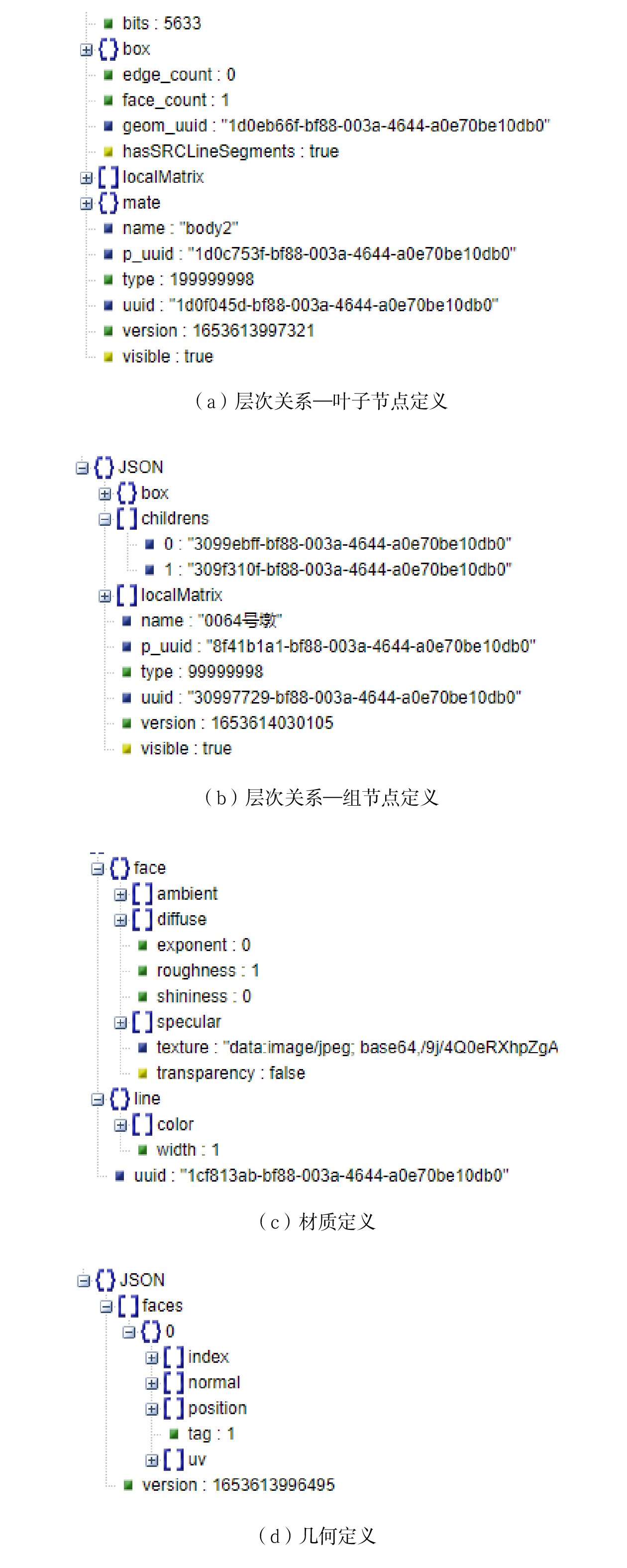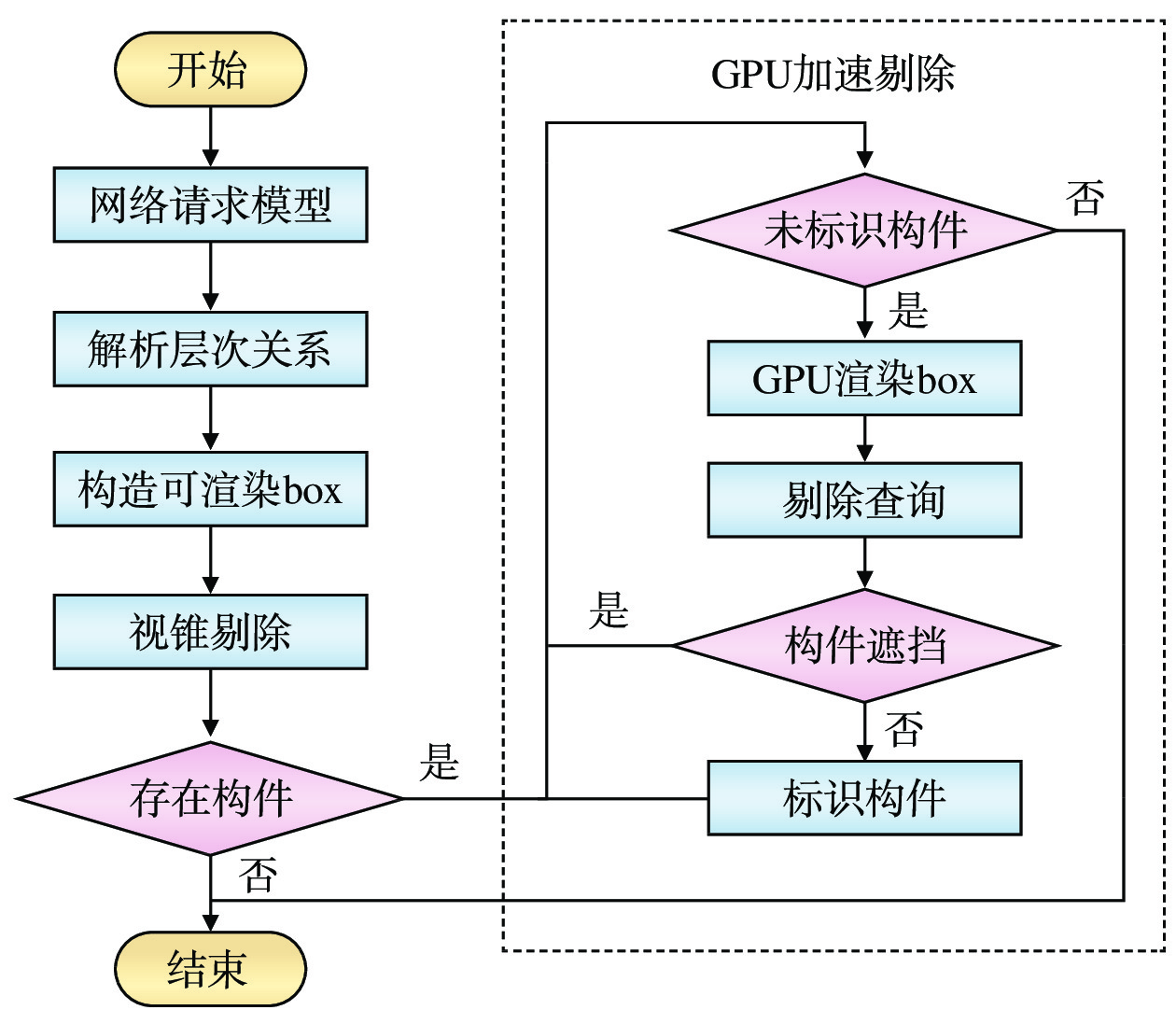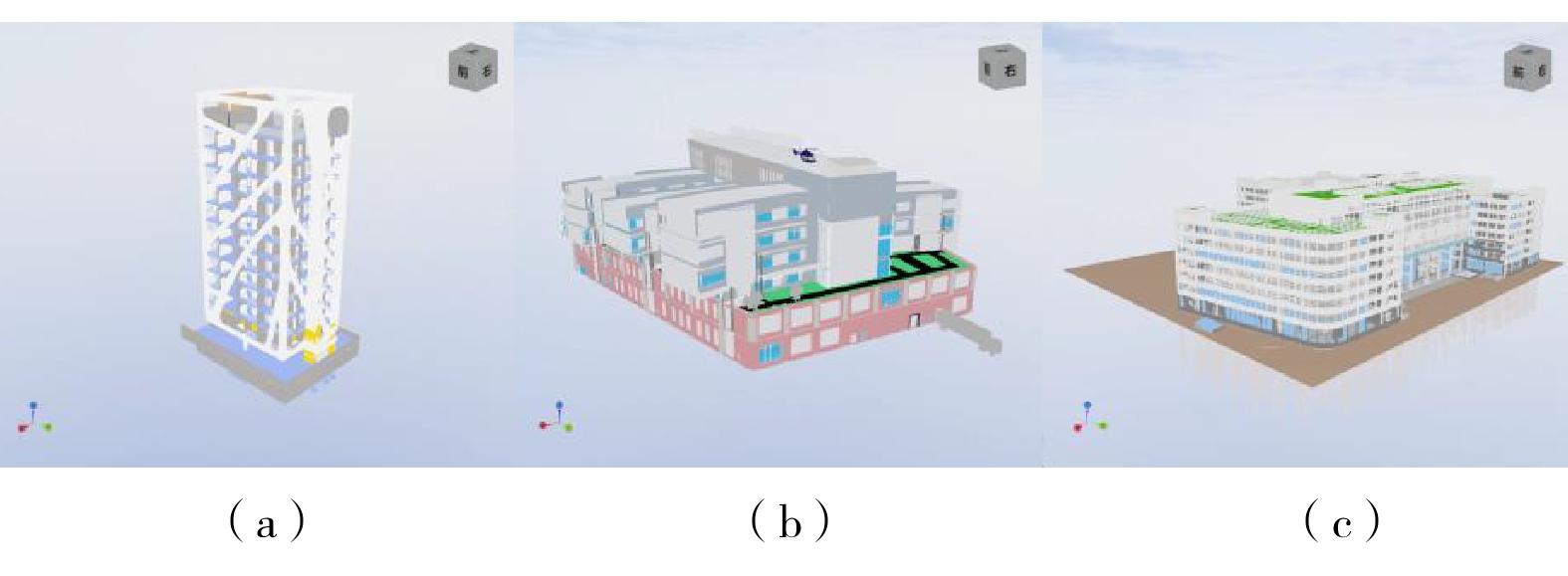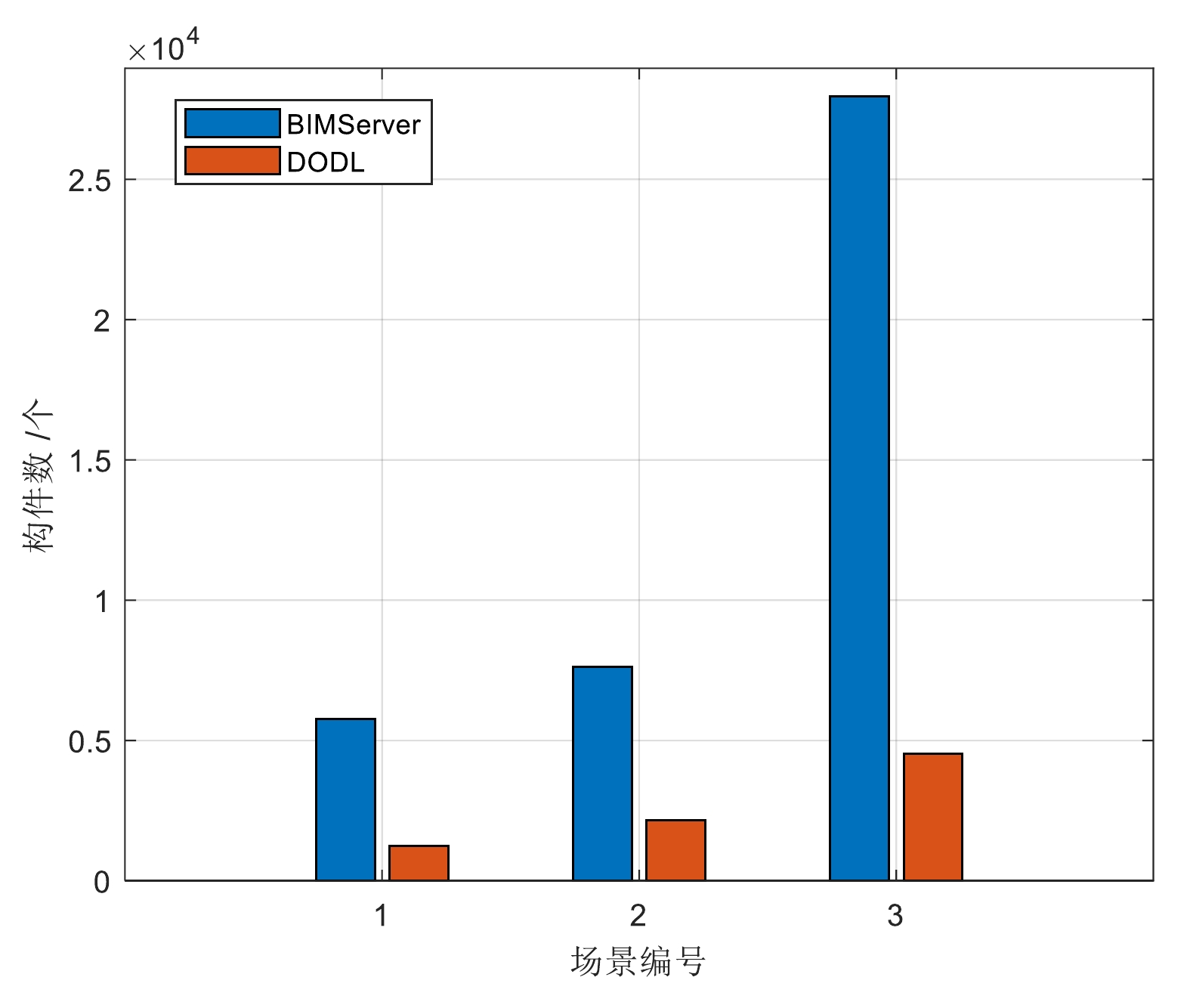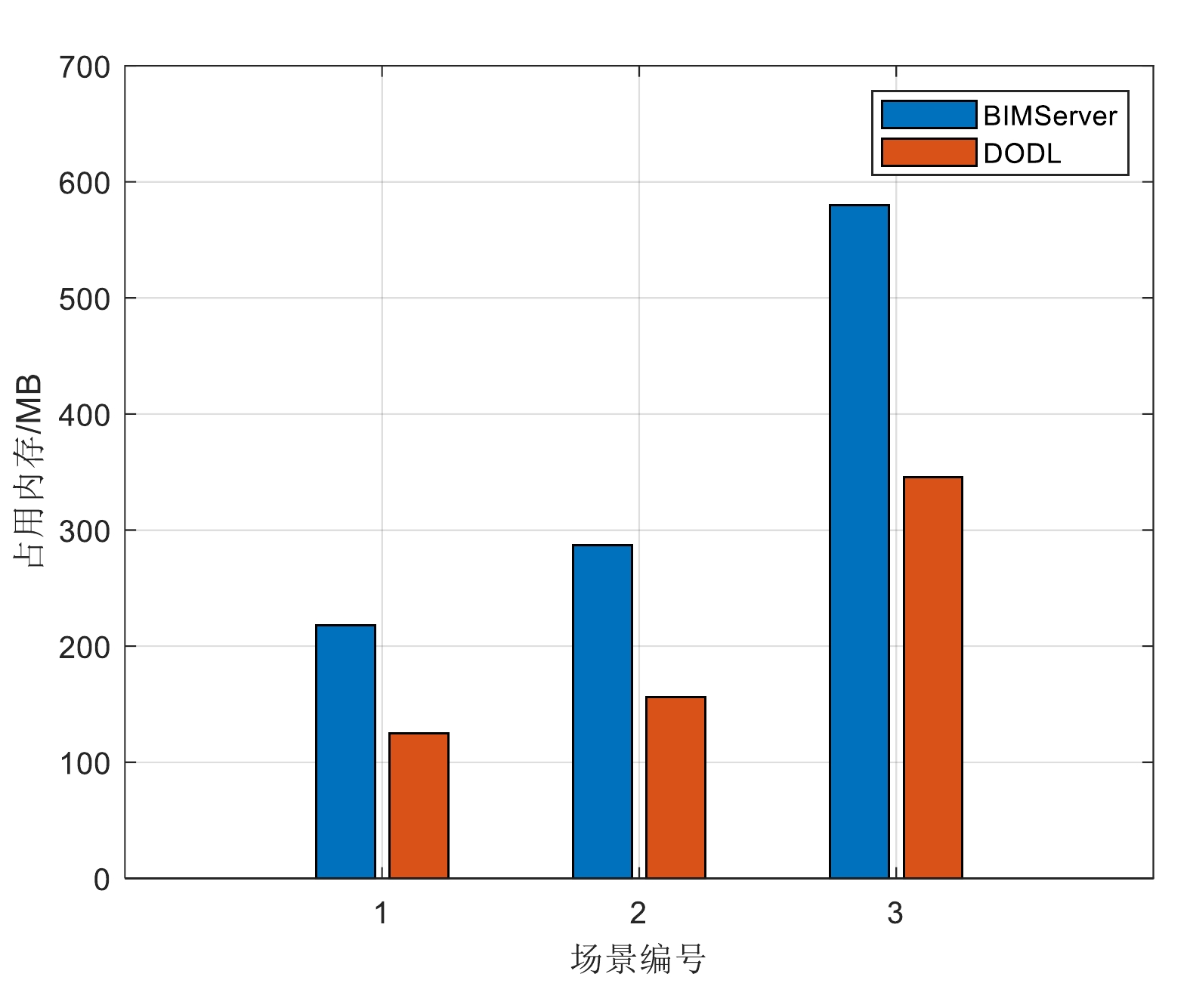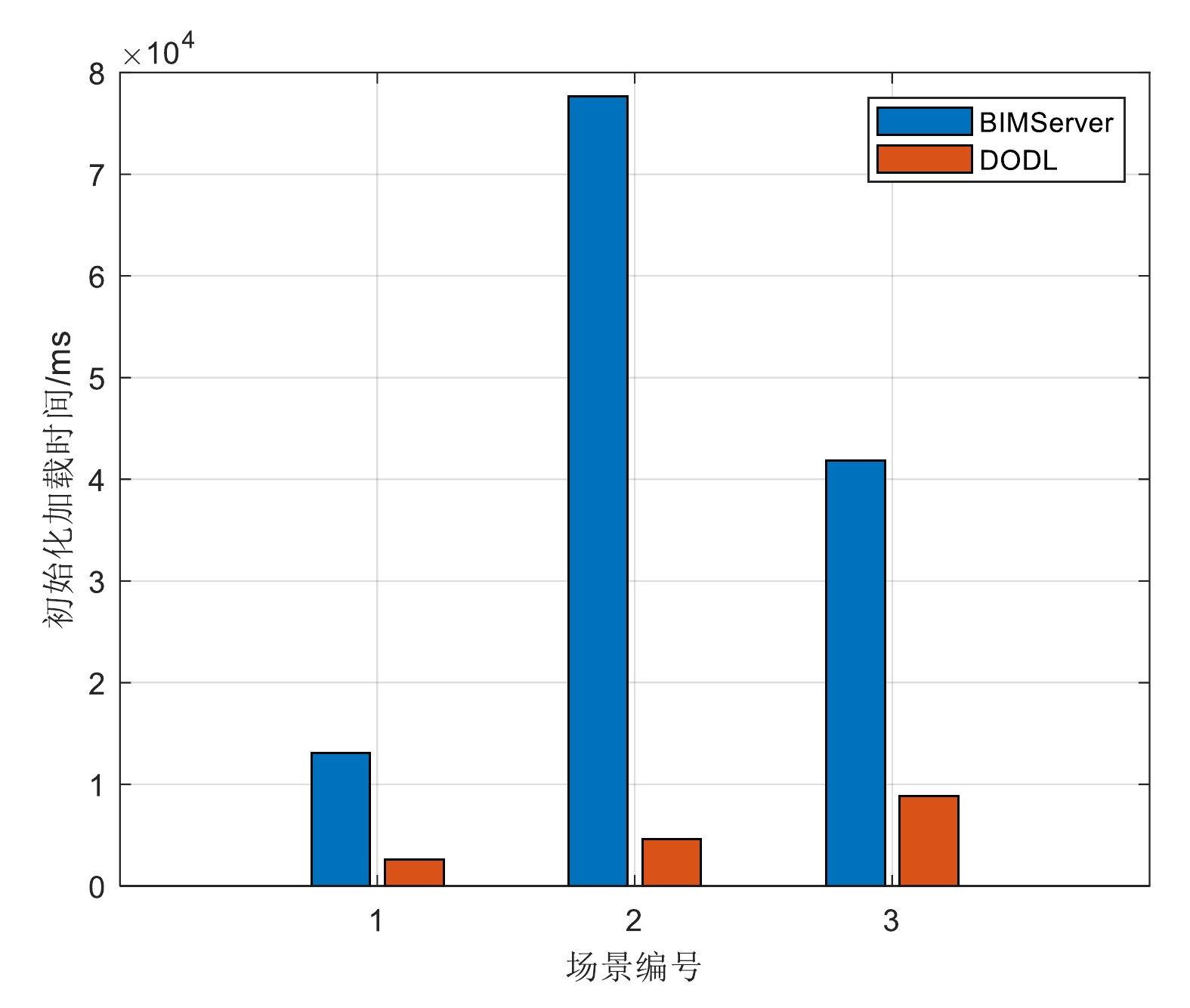Demand-oriented dynamic loading method based on IFC
-
摘要: 为解决Web端建筑信息模型(BIM,Building Information Modeling)场景数据加载技术面向复杂模型数据时存在的加载时间过长、用户体验不佳的问题,提出一种Web端基于工业基础类(IFC,Industry Foundation Classes)标准的面向需求的动态加载方法。以IFC模型文件作为研究对象,在遵从建筑语义前提下,以建筑构件为粒度,将层次关系、几何特性、材质、属性等信息拆分存储;结合构件可见性和几何相关性,设计出基于图形处理器(GPU,Graphics Processing Unit)加速的面向需求的动态加载方法;搭建实验测试环境,选取若干IFC模型文件,进行方法验证。以初始加载构件个数、内存占用和初始加载时间作为性能评价指标,与使用BIMServer开源服务器平台加载的方法相比,文章所提方法的初始加载组件数量减少了约71%,内存占用减少了约40%,初始加载时间缩短了约78%,有效减少了用户因加载而等待的时间,改善了用户交互体验,可为铁路行业开展Web端BIM大场景应用提供快速加载技术支持。
-
关键词:
- 建筑信息模型(BIM) /
- 工业基础类(IFC)标准 /
- IFC模型文件 /
- 分时动态加载 /
- 图形处理器(GPU)
Abstract: In order to solve the problems of long loading time and poor user experience when building information modeling (BIM) scene data loading technology on the Web side faced complex model data, this paper proposed a IFC (Industry Foundation Classes) based demand-oriented dynamic loading method on the Web side. The paper took IFC model files as the research object, took building components as the granularity, split and stored hierarchical relationship, geometric features, material, properties and other information, combined component visibility and geometric correlation components, designed a demand-oriented dynamic loading method based on GPU (Graphics Processing Unit) acceleration, build an experimental test environment, selected several IFC model files, and verified the method. The paper used the number of initially loaded components, memory consumption and initial loading time as performance evaluation indicators. Compared with the method of loading using the BIMServer, the experimental results show that the proposed method improves the number of initially loaded components, memory consumption and initial loading time by about 71%, 40% and 78% respectively, reduces the time users wait for loading, and improves the user interaction experience. It can provide fast loading technical support for railway industry to carry out Web-end BIM big scene application. -
-
表 1 字段含义说明
字段名 含义 bits 数据长度 box 包围盒 edge_count 边个数 face_count 面个数 geom_uuid 几何标识 localMatrix 局部矩阵 mate 材质标识集 name 名字 p_uuid 父节点标识 type 类型 uuid 节点标识 version 版本 visible 可见性 childrens 子节点集 texture 纹理贴图 transparency 透明度 color 颜色 diffuse 漫反射光 index 顶点索引 normal 顶点法向 position 顶点坐标 uv 顶点二维坐标 tag 边/面标签 表 2 IFC模型文件信息
模型名 子图序号 内存/KB 构件数/个 实体数/个 arboleda.ifc a 151 166 5 786 17 072 20210219Architecture.ifc b 110 672 7 637 34 852 industrial Park plant.ifc c 242 601 27 958 87 144 -
[1] BuildingSMART International. BuildingSMART industry foundation classes (IFC)[EB/OL]. [2022-08-22].https://www.buildingsmart.org/.
[2] ISO. Industry foundation classes (IFC) for data sharing in the construction and facility management industries: ISO 16739: 2013[S]. Geneva: ISO, 2013.
[3] 刘 强,张建平,胡振中. 基于键-值缓存的IFC模型Web应用技术 [J]. 清华大学学报(自然科学版),2016,56(4):348-353,359. [4] 徐 照,徐夏炎,李启明,等. 基于WebGL与IFC的建筑信息模型可视化分析方法 [J]. 东南大学学报(自然科学版),2016,46(2):444-449. [5] Lu H L, Wu J X, Liu Y S, et al. Dynamically loading IFC models on a web browser based on spatial semantic partitioning [J]. Visual Computing for Industry, Biomedicine, and Art, 2019, 2(1): 4. DOI: 10.1186/s42492-019-0011-z
[6] Scully T, Friston S, Fan C, et al. glTF streaming from 3D repo to X3DOM[C]//Proceedings of the 21st International Conference on Web3d Technology, 22-24 July, 2016, Anaheim, CA, USA. New York, USA: ACM, 2016. 7-15.
[7] Scully T, Doboš J, Sturm T, et al. 3drepo. io: building the next generation Web3D repository with AngularJS and X3DOM[C]//Proceedings of the 20th International Conference on 3D Web Technology, 18-21 June, 2015, Heraklion, Crete, Greece. New York, USA: ACM, 2015. 235-243.
[8] 李 柯,张 乾,贾金原. 云边页协同的WebBIM大场景多粒度兴趣加载调度算法 [J]. 计算机辅助设计与图形学学报,2021,33(9):1388-1397. [9] 刘小军,贾金原. 面向手机网页的大规模WebBIM场景轻量级实时漫游算法 [J]. 中国科学:信息科学,2018,48(3):274-292. [10] BIMServer[EB/OL]. [2022-08-22]. http://bimserver.org/.
[11] Open CASCADE[EB/OL]. [2022-08-22].https://www.opencascade.com/.
[12] Amor R, Dimyadi J. An open repository of IFC data models and analyses to support interoperability deployment[C]//Proceedings of the 27th CIB W78 International Conference, 16-18 November, 2010, Cairo, Egypt. Kanata, Canada: CIB, 2010.
-
期刊类型引用(20)
1. 王震宇,武鹏,马露露,边原. 基于BIM参数化建模的接触网吊弦计算在京张高速铁路的应用研究. 铁道运输与经济. 2024(01): 67-73 .  百度学术
百度学术
2. 许建国,刘杰,孟祥奎,李育冰,王恒,王敬渊. 高速铁路接触网工程数字化安装关键技术. 电气化铁道. 2024(01): 8-12+21 .  百度学术
百度学术
3. 凌杰. 浅谈BIM技术在铁路接触网工程现场指导施工技术研究. 中国设备工程. 2023(08): 203-205 .  百度学术
百度学术
4. 张毅. 基于BIM的接触网腕臂装配设计系统研究. 铁路计算机应用. 2023(04): 38-42 .  本站查看
本站查看
5. 伊金浩,张毅,陈善乐,张鹏. 基于BIM技术的接触网三维数字化设计软件研究. 铁道标准设计. 2023(10): 171-178 .  百度学术
百度学术
6. 耿肖,石瑞霞,赵传. 参数化驱动的接触网腕臂装配BIM建模方法. 铁路技术创新. 2022(01): 98-103 .  百度学术
百度学术
7. 韩旻志,马强,董小兵. 基于三层架构的铁路信号BIM设计技术路线研究. 智能制造. 2022(05): 90-95 .  百度学术
百度学术
8. 韩旻志. 基于三层架构的铁路信号BIM设计技术路线研究. 铁道标准设计. 2021(01): 149-153+159 .  百度学术
百度学术
9. 邓梦. BIM技术在高速铁路接触网工程应用. 电子技术与软件工程. 2021(09): 193-194 .  百度学术
百度学术
10. 何利江. 智能化接触网腕臂预配技术研究及应用. 交通世界. 2021(18): 6-7 .  百度学术
百度学术
11. 梁崇亮,金光,乔锦新,李银生. 高速铁路接触网BIM设计研究与应用. 铁路技术创新. 2021(04): 32-36 .  百度学术
百度学术
12. 黄鑫,鲁小兵. BIM技术在400km/h高速铁路接触网工程中的应用. 高速铁路技术. 2021(05): 102-106 .  百度学术
百度学术
13. 靳辰琨,郭志光. 铁路四电工程建设BIM技术应用研究. 铁道标准设计. 2021(12): 110-115 .  百度学术
百度学术
14. 杨文成. 基于BIM设计的道岔设备建模方法研究. 铁道勘察. 2020(01): 133-136 .  百度学术
百度学术
15. 付逸群. BIM技术在南阳东站机电工程中的应用研究. 铁路计算机应用. 2020(02): 38-43 .  本站查看
本站查看
16. 范少杰. 高速铁路精密工程测量技术标准的研究与运用. 工程技术研究. 2020(06): 69-70 .  百度学术
百度学术
17. 吴积钦,杨佳,关金发,刘涛. 中国铁路接触网数字化发展策略与实践. 高速铁路技术. 2020(04): 21-27 .  百度学术
百度学术
18. 符跃忠. 既有高铁线路接触网双线腕臂支柱更换设计方案研究. 中国建设信息化. 2020(18): 58-59 .  百度学术
百度学术
19. 安蕾,杨斌,西穷. 基于BIM的京雄城际铁路接触网智能预配管理系统与应用. 铁道建筑技术. 2020(09): 30-34 .  百度学术
百度学术
20. 谈敦龙. BIM技术在高速铁路接触网工程中的应用研究. 智能城市. 2020(24): 109-110 .  百度学术
百度学术
其他类型引用(6)





 下载:
下载:
